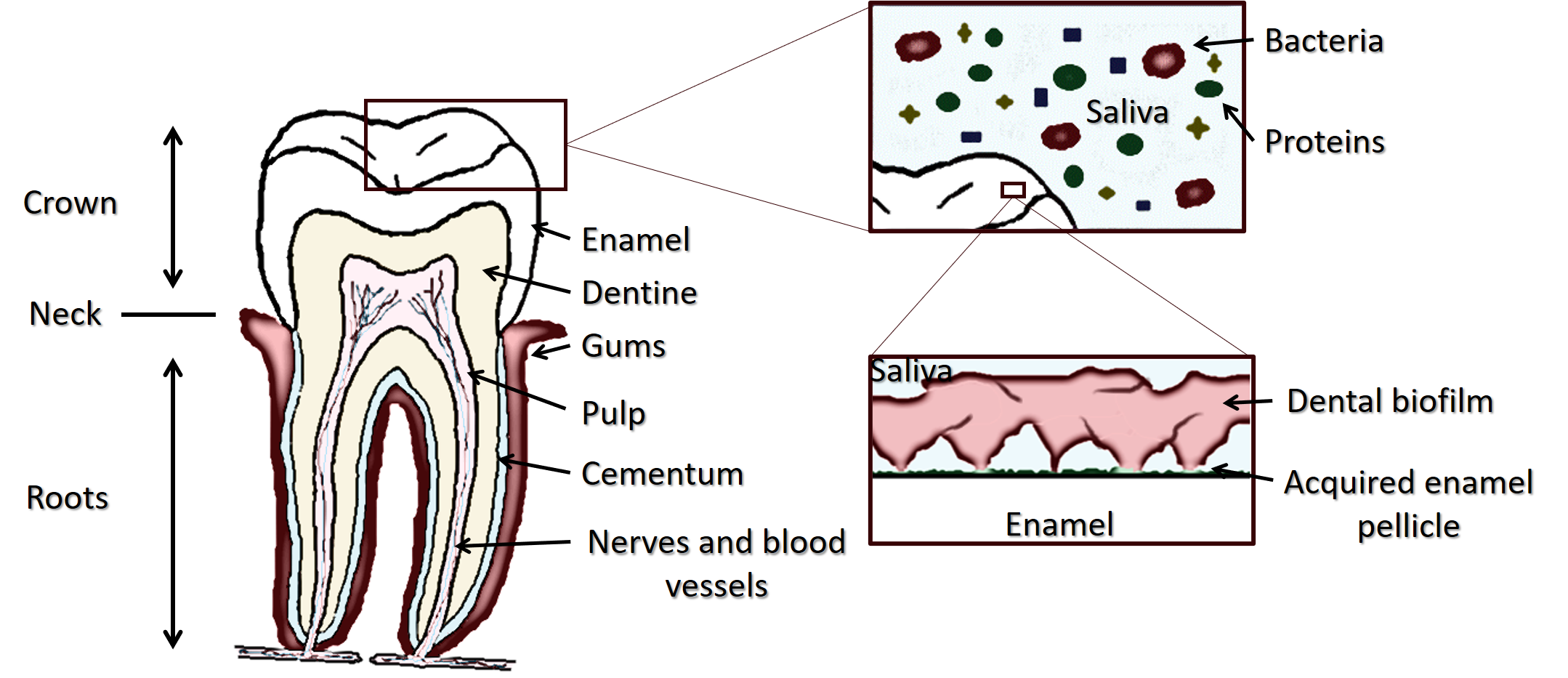Tribology in oral health
While it may not be immediately obvious, the applications of tribology to oral health concern both restorative and preventative dentistry.
On the one hand, the applications to restorative dentistry may be more apparent as oral diseases can cause teeth failure and hence the need of fillings, implants, crowns, and bridges. Therefore, understanding friction, lubrication, and wear mechanisms of teeth can inform the choice of better restorative materials (ceramics, composites, or alloys).
On the other hand, preventive dentistry deals with the daily maintenance of teeth to keep them healthy and to avoid cavities, gum disease, periodontal disease, enamel wear, and the like. So, how does tribology find its place in preventive dentistry?
The most common and ancient act of preventive dentistry is known to all of us as toothbrushing. Going back to 4000 – 3000 BC, Egyptians used to clean their teeth with frayed twigs and some sort of homemade dentifrice. Teeth cleaning products evolved from Hippocrates’ (460–377 BC) “Indian medicament”, consisting of burned heads of mice and hares, to Celsus’ (20 BC–AD 50) mixture of myrrh, aromatic plants, pounded egg shells, and snail shells. Many years later, in the 18th –19th century, the mass production of modern dentifrices and toothbrushes was taking place. Anyway, the general idea of toothbrushing has remained the same throughout the ages: by using a toothbrush and a dentifrice, we attempt to remove food debris and dental biofilm. The latter is commonly known as dental plaque, which is the bacterial layer attached to the enamel. Despite being the most common act of dental care, teeth cleaning is definitely more complex than most people may imagine. In fact, it involves biochemical, mechanical, and physico-chemical actions.
Despite being the most common act of dental care, teeth cleaning is definitely more complex than most people may imagine. In fact, it involves biochemical, mechanical, and physico-chemical actions.
The biochemical action of teeth cleaning is activated by the presence of the dental biofilm. The dental biofilm is formed on the enamel surface previously coated with a protective salivary protein layer called acquired enamel pellicle. As all biofilms, dental biofilm forms progressively: the less its structure is disrupted, the more it evolves and the more we are exposed to oral diseases.
The mechanical action of teeth cleaning is activated by the presence of the toothbrush. Influential parameters include toothbrush design (stiffness, number, dimension, and design of filaments), mechanical properties of soft tissues (gums) and hard tissues (enamel and dentine) , and individual brushing technique (applied brushing force as well as duration, direction, and velocity of brushing).
The physico-chemical action of teeth cleaning is activated by the presence of the dentifrice. The variety of results reported in literature shows that the characteristics of the dentifrice change the behavior of the toothbrush.
For years, scientists have believed that the removal of dental biofilm is obtained by abrasion via the action of cleansing-particles. In fact, research has been mainly conducted from an “abrasive” point of view; this is so much true that cleansing particles are commonly known as “abrasive particles”. However, with a better understanding of the “oral ecosystem” and with the application of tribology to preventive dentistry, the abrasion dogma has been challenged. Recent studies have shown that abrasion may not be the only mechanism that takes part in the removal of dental biofilm. Moreover, it is even possible that abrasion occurs only in specific conditions, which could explain the conflicting results in literature.
Understanding the tribological phenomena that take part in the teeth cleaning process is crucial to provide better products for oral health. An important step in this direction would be answering the following questions:
• What are the relations between friction, wear, and lubrication of dental biofilm when brushing our teeth?
• How do friction, wear, and lubrication evolve during brushing?
• What tribological characteristics of the toothbrush–dentifrice couple are ideal to remove effectively the dental biofilm?
In 1997, Professor Stuart L. Fischman at The State University of New York wrote “We certainly eat well, speak well, look fine and ‘smell fresh’—but we also have plaque, gingivitis and dental caries. The reader can determine how much progress has been made by reflecting on his or her personal oral health status!” Two decades later, this is still true.
Bibliography
- Descartes S., Courtieux L., Berthier Y., PedittoF., “Tribological study of oral care silica”, Tribology International 2015, Vol. 82, 551-560, 2015
- Lanza A., Ruggiero A., and Sbordone L., “Tribology and Dentistry: A Commentry”, Lubricants 2019, Vol. 7, No. 52, pp. 1-15, 2019
- Popa M., Peditto F. et al, “A tribological approach to understand the behavior of oral-care silica during tooth brushing”, Biotribology 2016, Vol. 6, pp. 1-11, 2016
- Scherge M., Sarembe S., Kiesow A., and Petzold M., (2013), “Dental tribology at the microscale”, Wear, Vol. 297, pp. 1040-1044, 2013
- Ten Cate, “Biofilms, a new approach to the microbiology of dental plaque”, Odontology 2006, Vol. 94, pp. 1-9, 2006



Be the first to comment